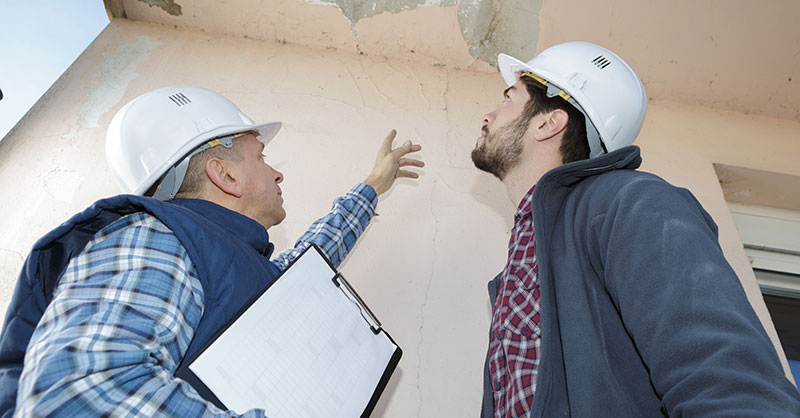Minimize Water Damage Loss for Your Building

Water intrusion losses, both internal and external, are a significant concern for any building owner. In fact, water intrusion is one of the leading causes of loss on Builders Risk projects due to timeline delays and mold from water intrusion.
How to Help Prevent Water Damage
Building owners and managers can use the following tips to help prevent significant losses due to water damage.
Identify sources of water intrusion and how they could enter the project
External Water Sources
- Damaged roofing materials or other building materials
- Clogged roof drains and gutters
- You should regularly clean roof drains and gutters.
- Surface water
- Groundwater
- Rain and other precipitation
- Make certain that the building envelope is watertight, and all structural members are completely dry before installation or storage of susceptible building materials, such as drywall, carpeting and high-valued equipment.
Internal Water Sources
- Plumbing
- Water supply lines
- Replace lines with steel braided hoses that can reduce water “bursts.”
- Hot water heaters
- Consider replacing any hot water heater over 10 years of age.
- Dishwashers
- Inspect around dishwashers and hose connections for signs of leakage. Call a plumber if you suspect a problem.
- Fixtures such as faucets, toilets, sinks or shower valves
- Shut off water valves before leaving buildings unattended for an extended period.
- Equipment such as garbage disposals and sump pumps
- Establish a plan to prevent freezing.
- Establish a plumbing pressurization plan.
- Pressurize new plumbing installations in zones.
- Know where shut-offs are located.
- Heaters, air handlers, evaporators, chillers, pumps, tanks, boilers and refrigerant lines
- Automatic sprinklers
- Establish a plan to prevent freezing.
- Establish a plumbing pressurization plan.
- Pressurize new plumbing installations in zones.
- Know where shut-offs are located.
- Unusual features such as swimming pools
- Establish a plan commensurate with the exposure.
Establish a post-intrusion plan
- Assemble and transmit all documentation to the general contractor and building owner.
- Conduct appropriate third-party testing to make certain remediation is complete.
In the event that water intrusion occurs
- Identify the source of intrusion.
- Institute immediate remediation.
- Know where water shut-offs are located for plumbing and automatic sprinklers.
- Train staff on emergency shut-off procedures.
- Provide a map if possible.
- Call the previously contracted remediation specialist.
- Collect remediation documentation, ideally daily reports.
- Contact the appropriate trade contractor to accomplish a permanent solution.
Complete the below checklist to help create a plan to protect your building from water damage.









